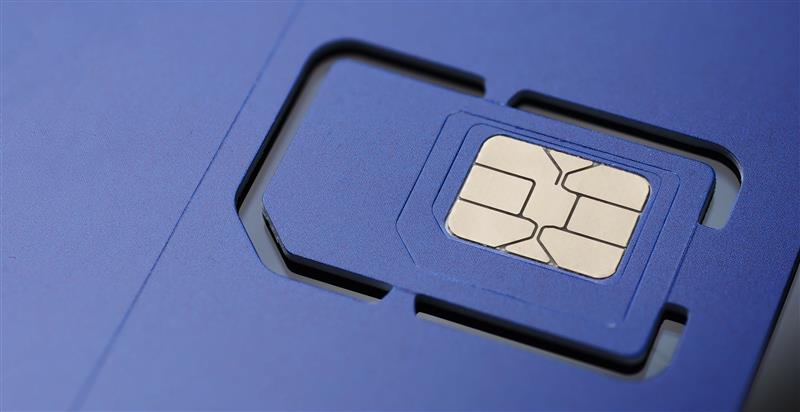A combination of the Internet of Things and robotics are rapidly transforming the smart logistics sector by increasing efficiency and reducing costs. Moreover, as AI continues to mature, more opportunities for optimizations and enhancements through the application of Internet of Robotic Things (IoRT) are becoming clear.
What is smart logistics?

In logistics, fulfilment, distribution and delivery, the use of intelligent sensors and smart devices like IoRT and autonomous robots have great potential to streamline the processes involved in the transportation of goods. This can include anything from IoT sensors enabling a truck to continuously share data on its location and the status of the cargo in transit, down to the location and volume of inventory or products within a warehouse facility and the means to automate retrieval and packing of those items. Ultimately, IoT is enabling smart logistics functions to be monitored and managed in real time.
The benefits are measurable. According to the 2023 State of IoT Adoption in Supply Chain and Logistics, more than half (58%) of respondents reported that IoT has enabled their business to create operational efficiencies.
What is IoRT?

The Internet of Robotic Things (IoRT) is the integration of IoT and robotics, to build upon the foundation of interconnectedness with autonomous and even intelligent machines capable of real-time sensing, decision-making, and physical operations.
IoRT is making waves in several industries, from manufacturing, to pharmaceuticals, to agriculture, and logistics. Typical implementations of the technology include robotic arms, vehicles and drones, and mobile units with articulated robotic, even humanoid, appendages.
Two types of IoRT application are becoming popular in the smart logistics sector – Automated Guided Vehicles (AGVs) and Autonomous Mobile Robots (AMRs), both of which move goods between different areas of a warehouse, distribution center or locale but have different capabilities.
What are AGVs?

Automated Guided Vehicles or AGVs rely on tracks or predefined paths to move around. They don’t typically incorporate much in the way of intelligence, so they often require human operator oversight. AGVs are commonly used to move items around closed environments such as warehouses and factory floors, acting as an assistant to human workers.
What are AMRs?

Autonomous Mobile Robots or AMRs are the more intelligent cousin of the AGV and have the ability to move throughout their environment without the need for predefined pathing by making decisions in real-time based on data from sensors and cameras. Because AMRs are capable of processing data and making informed decisions, they are often given free roaming of a controlled environment like a warehouse where they might pick inventory for packing, but could even be found out in the world, such as delivery robots like those from Starship Technologies.
IoRT in smart logistics
The ability to put connected sensors on pretty much anything, from products, to packing robots and delivery trucks means that IoRT is fast becoming the nervous system of the smart logistics sector, where connected robots can be used for warehouse management, inventory tracking, and fulfilment.
By enabling real-time data exchange between robots, cloud platforms, and other machines, IoRT enables robots to perform tasks autonomously, improving efficiency and reducing human intervention. In fact, through the capabilities of IoRT for remote monitoring and control of robots, human operators can manage and troubleshoot these automated systems from almost anywhere with an internet connection.
A secondary function of IoRT in smart logistics or fulfilment is through leveraging the data collection and analysis capabilities of IoT sensors within the robotic applications to gather environmental data and send it to systems for real time or asynchronous analysis and decision making.
Types of robots used in smart logistics

Automated warehousing robots
These types of robots are used for picking, packing, sorting, and moving goods within warehouses. You may have seen videos of something resembling a crate with wheels in Amazon distribution centers. The world’s tallest autonomous robot is a 45-foot-tall machine that can scan up to 100,000 pallets and one million square feet per day while creating a real-time digital twin of the space. This category also includes AGVs and AMRs, which move goods between different areas of a warehouse or distribution center.
Robotic arms
Robotic arms automate tasks like palletizing, picking and packaging, and loading or unloading of goods. Articulated robotic arms are designed to emulate the functions of a human arm, but often at a different scale. These robots feature multiple rotary joints allowing for larger degrees of motion, making them well suited to complex physical tasks like picking and packaging.
Selective Compliance Articulated Robot Arms (SCARA) are a special type of robotic arm made for fast, precise movements in a cylindrical workspace. Common in several industries due to their high level of accuracy, they are often found in packaging, assembly, and pick-and-place operations.
Drones
In some cases, drones fall into the automated warehousing robot’s category where they are used for inventory management, but they can also be used for last-mile delivery. Small, ground mobile delivery bots are becoming more common and there are experiments taking place with aerial drones for the same.
Humanoids
Humanoid type robots are less popular in smart logistics environments than in other sectors because other robot types are more appropriate. However, these human-like forms can be used to take on human-centric functions and several large enterprises are experimenting with humanoid robots because they can navigate and operate in spaces designed for humans, meaning there is no need to retrofit environments to accommodate them.
Cobots
Cobots, or collaborative robots, is another catch-all term that could apply to robotic arms, but in this case, it refers to human assist robots that function alongside humans and help them with repetitive, dangerous, or precise tasks. Cobots can share spaces with human workers to help them accomplish more, for example assisting in the picking and packaging of items too heavy for a human to move.
AI-powered robotics
AI is being deployed in smart logistics environments in the cloud or through edge computing, where it can influence the IoRT to optimize routes, predict or respond to demand, and automate warehouse operations.
ML algorithms can help businesses predict demand for products more accurately, ensuring that they stock the right amount of inventory at the right time, while sensors on robots within the warehouse can keep check on stock levels in real-time.
For cold chain logistics – is essential for sectors that require temperature-sensitive transportation – IoT sensors and real-time monitoring ensures that sensitive products are kept at the right temperatures.
For last-mile delivery, real-time optimization of transport routes can offer advantages by calculating the most efficient routes, reducing travel time and fuel consumption either for autonomous delivery vehicles or human drivers.
Benefits of IoRT in smart logistics

Increased efficiency and productivity
Robots can work 24/7 without the need for breaks, eating or sleeping. This increases overall productivity, reduces manual labor, minimizes errors, and speeds up processes.
Improved precision and accuracy
Robots can repeatedly perform tasks with a consistently high level of precision and accuracy, reducing errors and improving product quality, where humans would have variable performance.
Better decision-making
Digital twins provide a real-time virtual model of warehouse operations, enabling better decision-making, predictive maintenance, and continuous optimization of logistics systems.
Enhanced safety
In hazardous environments, or even just dealing with heavy goods, robots can perform tasks dangerous to humans.
Reduced costs
Most of the benefits above result in reduced costs. But IoRT can also drive down spend by optimizing routes, introducing more efficient inventory management, and automating tasks.
Improved insights
Real-time tracking and data analysis on everything from inventory to process performance can provide better insights into the supply chain.
Greater sustainability
Optimized routes, improved processes and reduced waste can contribute to a more sustainable supply chain and reduce impact on the environment.
Enhanced customer satisfaction
Ultimately, many of the benefits outlined above can have a positive impact on the customer experience, through faster delivery times, more accurate tracking, and reduced errors.
The critical role of connectivity in IoRT

Given that the supply chain features lots of moving parts, from moving goods around warehouses and distribution centers to transporting them across borders and oceans, reliable international connectivity is essential for IoRT.
In many cases, IoRT will need to transmit data via cellular networks to continuously track and control items that move around the world. Solutions that rely on local connectivity, like WiFi, Bluetooth or some flavors of LoRaWAN (LPWAN), limit connectivity to that location. Satellite connectivity is not cost effective, and the ecosystem is not mature.
This leaves cellular as the best option for IoRT devices that require connectivity to switch between different networks as the devices move between them, while avoiding the pitfalls of permanent roaming, such as being disconnected without notice.
A growing number of national networks are clamping down on excessive roaming and you don’t want your pallet of goods to go offline having used up its roaming allowance and unable to connect. So, connectivity needs to work with any cellular network in any territory, on that network’s terms.
Transforming the warehouse and beyond

For IoRT applications, Eseye’s AnyNet+ eSIM can detect and connect to the best available mobile network, and immediately switch networks if the connection drops or the environment changes.
This is true anywhere in the world, thanks to our relationships with over 800 mobile networks, including in countries with roaming limits. A single design, with a single transparent bill, can be deployed regardless of where the IoRT device will travel.
As robots become even more autonomous, connectivity will be critical not just to enable robots to carry out a specific task, but to adapt to unexpected changes in their environment through application of AI.
Eseye brings decades of end-to-end expertise to integrate and optimise IoT connectivity delivering near 100% uptime. From idea to implementation and beyond, we deliver lasting value from IoT. Nobody does IoT better.

